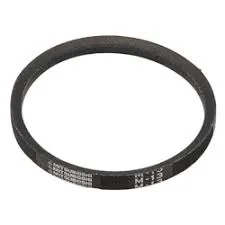- Arabic
- French
- Russian
- Spanish
- Portuguese
- Turkish
- Armenian
- English
- Albanian
- Amharic
- Azerbaijani
- Basque
- Belarusian
- Bengali
- Bosnian
- Bulgarian
- Catalan
- Cebuano
- Corsican
- Croatian
- Czech
- Danish
- Dutch
- Afrikaans
- Esperanto
- Estonian
- Finnish
- Frisian
- Galician
- Georgian
- German
- Greek
- Gujarati
- Haitian Creole
- hausa
- hawaiian
- Hebrew
- Hindi
- Miao
- Hungarian
- Icelandic
- igbo
- Indonesian
- irish
- Italian
- Japanese
- Javanese
- Kannada
- kazakh
- Khmer
- Rwandese
- Korean
- Kurdish
- Kyrgyz
- Lao
- Latin
- Latvian
- Lithuanian
- Luxembourgish
- Macedonian
- Malgashi
- Malay
- Malayalam
- Maltese
- Maori
- Marathi
- Mongolian
- Myanmar
- Nepali
- Norwegian
- Norwegian
- Occitan
- Pashto
- Persian
- Polish
- Punjabi
- Romanian
- Samoan
- Scottish Gaelic
- Serbian
- Sesotho
- Shona
- Sindhi
- Sinhala
- Slovak
- Slovenian
- Somali
- Sundanese
- Swahili
- Swedish
- Tagalog
- Tajik
- Tamil
- Tatar
- Telugu
- Thai
- Turkmen
- Ukrainian
- Urdu
- Uighur
- Uzbek
- Vietnamese
- Welsh
- Bantu
- Yiddish
- Yoruba
- Zulu
Nov . 04, 2024 11:50 Back to list
Exploring the Benefits and Applications of V-Belt Technology in Modern Machinery
Understanding V-Belts Essential Components in Mechanical Power Transmission
V-belts are ubiquitous in various mechanical systems, serving as crucial components in the transfer of power between rotating shafts. Their unique design and functionality have made them a preferred choice in a wide range of applications, from automotive engines to industrial machinery. This article explores the design, types, applications, advantages, and maintenance of V-belts.
What Are V-Belts?
V-belts are elongated, flexible looped mechanisms typically made of rubber, fabric, and other materials that can provide significant tensile strength. Named for their trapezoidal cross-section resembling the letter V, these belts fit into matching grooves on pulleys, allowing them to grip securely while minimizing slippage. This configuration ensures efficient power transmission from one component to another, facilitating mechanical movement.
Types of V-Belts
There are several types of V-belts, each tailored for specific applications
1. Classical V-Belts The traditional type, generally available in a standard size and shape. They are widely used in many industrial and household applications.
2. Narrow V-Belts These are designed with a narrower profile, offering higher power transmission capabilities within a smaller physical space. They are commonly used in automotive scenarios.
3. Wrapped V-Belts These belts are covered in a layer of fabric, providing additional protection and grip. They're ideal for applications where moisture or other environmental factors can affect performance.
4. Raw Edge V-Belts Also known as fan belts, these have a raw edge that enhances flexibility and grip. They are frequently used in high-speed applications where precision is critical.
5. Cogged V-Belts Featuring notches along the belt's inner surface, cogged V-belts offer extra flexibility and heat dissipation. They are optimal for applications involving high speeds and tight bend radii.
Applications of V-Belts
V-belts are employed in a myriad of sectors, demonstrating their versatility
- Automotive Industry V-belts are integral in engine systems, driving various components like alternators, water pumps, and air conditioning compressors.
- Industrial Machinery They are extensively used in manufacturing equipment, conveyors, and compressors, providing the necessary power to drive complex machinery.
v-belts

- Agricultural Equipment Tractors and harvesters utilize V-belts for power transmission, enabling efficient operation of vital components.
- Home Appliances From washing machines to HVAC systems, V-belts play a vital role in ensuring smooth operation.
Advantages of V-Belts
The popularity of V-belts can be attributed to several advantages
1. Efficiency V-belts transmit power efficiently with minimal energy loss, resulting in lower operational costs.
2. Flexibility Their design allows for easy routing around pulleys and other components, making them suitable for various configurations.
3. Durability Constructed from robust materials, V-belts can withstand a range of temperature and environmental conditions.
4. Low Maintenance Once properly installed, V-belts require minimal maintenance, although regular inspections are necessary to ensure longevity.
5. Noise Reduction V-belts generally operate more quietly than chain drives, making them ideal for applications where noise is a concern.
Maintenance and Troubleshooting
To maximize the lifespan of V-belts, routine maintenance is essential. This includes periodic inspections for signs of wear and tear, such as cracks, fraying, or glazing (a shiny appearance due to friction). Additionally, tension adjustment is crucial; belts should neither be too tight nor too loose, as improper tension can lead to slippage or premature wear.
If a belt shows signs of slippage, it may be necessary to increase tension or replace it. To ensure optimal performance, replacing worn belts with new ones from reputable manufacturers is recommended, as this guarantees quality and compatibility.
Conclusion
In summary, V-belts are fundamental components in transmitting power across a variety of mechanical systems. Their design, versatility, and efficiency make them indispensable in multiple industries. Understanding the types of V-belts, their applications, and the importance of maintenance can help users optimize their performance, prolonging the life of both the belts and the machinery they support. As technology continues to evolve, the role of V-belts will undoubtedly grow, reinforcing their status as a key player in mechanical engineering and power transmission.
-
23100-KVB-901 Drive Belt for Honda VARIO | OEM Performance
NewsAug.06,2025
-
Variable Belt Drive AI Optimized for Efficiency
NewsAug.05,2025
-
High-Quality Tensioner Belt Pulley - Durable & Efficient
NewsAug.03,2025
-
Premium Timing Belt Factory | AI-Optimized Solutions
NewsAug.02,2025
-
Heat Joining Drive Belt | High-Durability Fusion Solution
NewsJul.31,2025
-
Timing Belt Video Guide: Selection, Design & Quality Insights
NewsJul.30,2025

